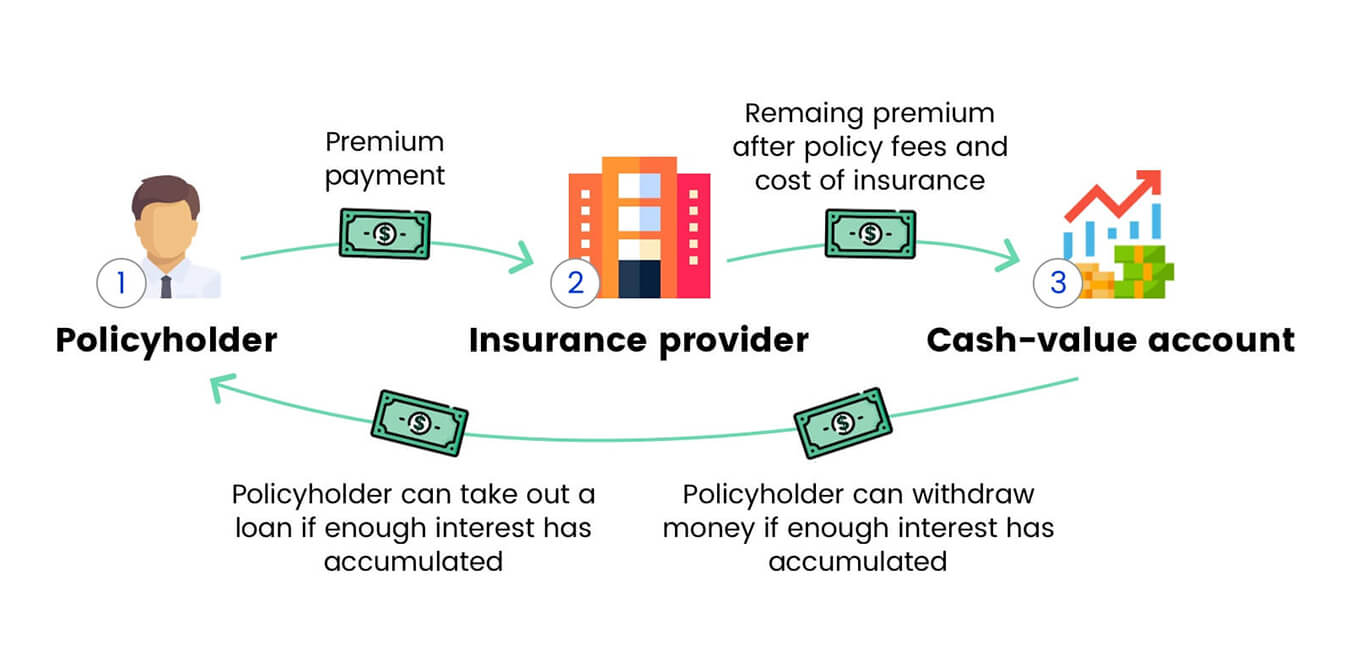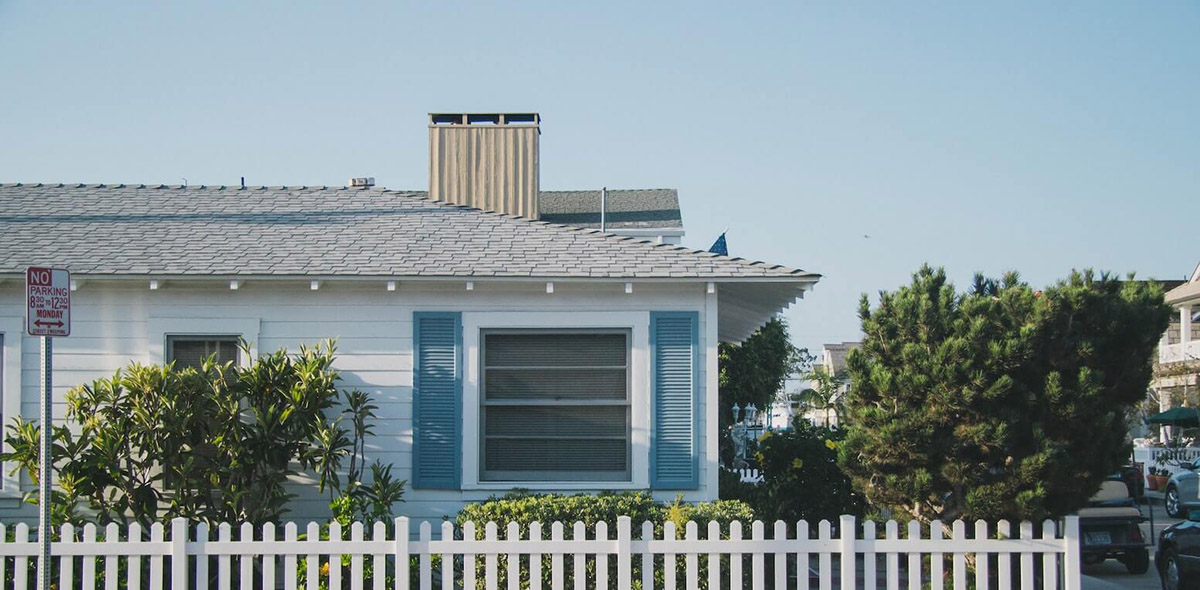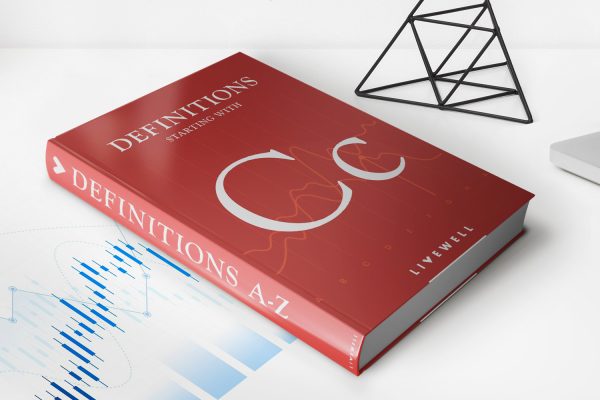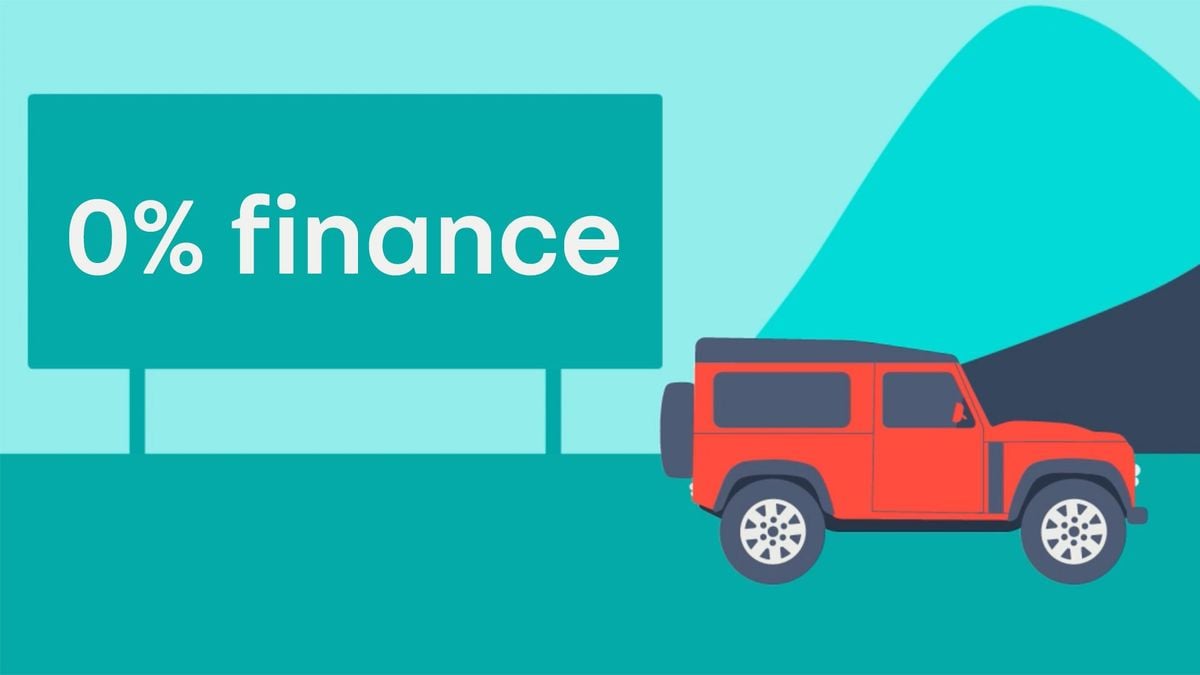

Finance
What Is A DP3 Insurance Policy?
Published: November 16, 2023
Learn everything you need to know about DP3 insurance policies, a popular finance option for homeowners seeking comprehensive coverage.
(Many of the links in this article redirect to a specific reviewed product. Your purchase of these products through affiliate links helps to generate commission for LiveWell, at no extra cost. Learn more)
Table of Contents
- Introduction
- Definition of a DP3 Insurance Policy
- Coverage Provided by a DP3 Insurance Policy
- Dwelling Coverage
- Other Structures Coverage
- Personal Property Coverage
- Loss of Use Coverage
- Personal Liability Coverage
- Medical Payments Coverage
- Additional Coverages and Endorsements
- Cost Factors for a DP3 Insurance Policy
- How to Obtain a DP3 Insurance Policy
- Conclusion
Introduction
Welcome to the world of DP3 insurance policies! If you’re a homeowner or landlord, or even if you’re just looking to understand more about insurance coverage, you’ve come to the right place. In this article, we’ll explore what a DP3 insurance policy is, what it covers, and how you can obtain one.
Before we dive into the details, let’s start with a quick overview. DP3 stands for “dwelling fire form 3,” which is a commonly used type of insurance policy for residential properties. Unlike standard homeowners insurance policies, which are typically used for owner-occupied homes, a DP3 policy is specifically designed for non-owner occupied properties, such as rental homes or investment properties.
DP3 insurance policies provide coverage for the structure of the property, as well as liability and additional coverages. In simple terms, they protect against various risks, including fire, lightning, smoke, explosions, and vandalism. The specific coverage and limitations can vary depending on the insurance provider and the policy’s terms and conditions.
Now that we have a basic understanding of what a DP3 insurance policy is, let’s delve deeper into the coverage it provides. In the following sections, we’ll explore the main components of a DP3 policy, including dwelling coverage, other structures coverage, personal property coverage, loss of use coverage, personal liability coverage, and medical payments coverage. We’ll also discuss additional coverages and endorsements that you can consider to enhance your policy.
Are you ready to learn more about DP3 insurance policies and how they can protect your property? Let’s get started!
Definition of a DP3 Insurance Policy
A DP3 insurance policy, also known as a dwelling fire form 3 policy, is a type of insurance coverage specifically designed for non-owner occupied residential properties. It offers protection to landlords or homeowners who rent out their properties to tenants. Unlike traditional homeowners insurance, which is intended for owner-occupied properties, a DP3 policy is tailored to meet the unique needs and risks associated with rental properties.
A DP3 insurance policy provides coverage for the dwelling (the main structure), as well as other structures on the property, personal property, loss of use, personal liability, and medical payments. It offers financial protection against a range of perils, such as fire, smoke, lightning, vandalism, and certain types of water damage.
One key aspect of a DP3 policy is that it typically insures the property on an actual cash value (ACV) basis. This means that in the event of a covered loss, the insurance company will pay the depreciated value of the damaged or destroyed property, taking into account factors such as age, wear and tear, and market value. It’s important to note that ACV coverage may result in a lower payout compared to replacement cost coverage, which pays the full cost of repairing or replacing damaged items without factoring in depreciation.
It’s also important to understand the limitations of a DP3 policy. While they provide essential coverage for rental properties, they do not typically extend to the personal belongings of tenants. Tenants are encouraged to obtain their own renter’s insurance policy to protect their personal belongings and provide liability coverage for themselves.
Now that we have a clear definition of what a DP3 insurance policy is, let’s explore the specific coverage options and benefits in the next sections of this article. Understanding these details will help you make informed decisions about protecting your investment property or rental home.
Coverage Provided by a DP3 Insurance Policy
A DP3 insurance policy offers several types of coverage to protect your non-owner occupied residential property. Let’s take a closer look at each of these coverage options:
- Dwelling Coverage: This is the primary coverage offered by a DP3 policy and provides protection for the main structure of your property. It covers damage or loss caused by covered perils such as fire, smoke, lightning, explosion, and vandalism. The policy will typically reimburse you for the cost of repairs or, in severe cases, the reconstruction of the dwelling.
- Other Structures Coverage: In addition to the main dwelling, a DP3 policy also provides coverage for other structures on your property, such as detached garages, sheds, or fences. This coverage typically extends to a specified percentage of the dwelling coverage amount.
- Personal Property Coverage: While a DP3 policy mainly focuses on the structure of the property, it may also offer limited coverage for your personal belongings that are used to maintain the rental property, such as appliances, tools, or equipment. However, it’s important to note that this coverage is typically lower than what would be offered by a standard homeowners insurance policy.
- Loss of Use Coverage: If your rental property becomes uninhabitable due to a covered loss, such as a fire, loss of use coverage can help cover the additional living expenses your tenants may incur while the property is being repaired or replaced. This may include costs such as temporary accommodation, meals, and transportation.
- Personal Liability Coverage: Personal liability coverage protects you as the homeowner or landlord in the event that someone is injured on your property and holds you responsible. It can help cover legal expenses, medical bills, and damages if you’re found liable for injuries or property damage caused to others.
- Medical Payments Coverage: This coverage provides payments for medical expenses incurred by someone who is injured on your property, regardless of fault. It can help cover minor injuries, such as a slip and fall, without the need for a lawsuit.
While these are the main coverage options provided by a DP3 insurance policy, it’s important to note that the specific details and limitations can vary depending on the insurance provider and the policy terms. It’s always a good idea to carefully review your policy and discuss any questions or concerns with your insurance agent to ensure you have the protection you need.
Dwelling Coverage
Dwelling coverage is one of the fundamental components of a DP3 insurance policy. It offers protection for the main structure of your non-owner occupied residential property. This coverage ensures that you are financially safeguarded in the event of damage or loss caused by covered perils such as fire, smoke, lightning, explosion, vandalism, and more.
When it comes to dwelling coverage, it’s important to understand the two main types of valuation methods used by insurance companies: actual cash value (ACV) and replacement cost value (RCV).
Actual cash value (ACV) is the most common valuation method used in DP3 policies. It takes into account the depreciated value of the dwelling at the time of the loss. Factors such as the age, condition, and fair market value of the property are considered when determining the payout amount. While ACV coverage may come at a lower premium, it’s crucial to note that it reimburses you for the current value of the property, taking depreciation into account.
On the other hand, replacement cost value (RCV) is an alternative valuation method that provides coverage for the full cost of repairing or replacing the damaged dwelling without considering depreciation. This means that you’ll receive a payout that enables you to rebuild or repair your property to its pre-loss condition, regardless of any depreciation. However, RCV coverage usually comes at a higher premium since it offers a higher level of protection.
When determining the appropriate dwelling coverage amount, it’s crucial to accurately assess the value of your property. Factors such as the size, location, construction type, building materials, and local building costs can impact the coverage needed. Working with an insurance agent or appraiser can help you evaluate the replacement cost or market value of your property to determine the appropriate dwelling coverage amount for your DP3 policy.
In addition to the actual structure, dwelling coverage may also include coverage for built-in appliances, fixtures, and permanent installations, such as flooring or countertops. It’s important to carefully review your policy to understand the specific items and perils covered under your dwelling coverage.
By choosing the right dwelling coverage for your DP3 policy, you can ensure that your non-owner occupied residential property is adequately protected, providing you with peace of mind and financial stability in the face of unexpected events.
Other Structures Coverage
When it comes to insuring your non-owner occupied residential property with a DP3 insurance policy, it’s not just the main dwelling that needs protection. Other structures on your property, such as detached garages, sheds, fences, or even a gazebo, may also require coverage. That’s where other structures coverage comes into play.
Other structures coverage is a component of a DP3 insurance policy that provides financial protection for structures on your property that are separate from the main dwelling. This coverage is typically a percentage of the dwelling coverage amount and is intended to cover the cost of repairing or rebuilding these structures if they are damaged or destroyed by covered perils.
This coverage is valuable because it can help cover the costs of repairing or replacing these structures in case of incidents like fire, vandalism, or even severe weather events. For example, if a storm causes a tree to fall and damage your detached garage, other structures coverage would help cover the cost of repairing or rebuilding the garage.
It’s important to note that not all types of structures may be covered under other structures coverage. Insurance providers may have specific limitations or restrictions on what qualifies as an “other structure” and the types of perils covered. It’s crucial to review your policy or consult with your insurance agent to understand the specific coverage provided.
When determining the appropriate coverage amount for other structures, it’s essential to consider the value of these structures and their vulnerability to risks. For instance, a larger detached garage or a custom-built shed may require higher coverage limits compared to a simple garden shed.
It’s also worth considering any additional structures that may be on your property, such as a swimming pool, hot tub, or even a standalone guest house. These structures may require separate or additional coverage options beyond the scope of other structures coverage. Be sure to discuss these structures with your insurance agent to ensure that they are adequately protected.
By including other structures coverage in your DP3 insurance policy, you can be confident that not only your main dwelling but also the additional structures on your property are covered in the event of damage or loss, providing you with the financial protection you need for your investment property or rental home.
Personal Property Coverage
While a DP3 insurance policy primarily focuses on protecting the structure of your non-owner occupied residential property, it may also offer limited coverage for personal property. Personal property coverage provides financial protection for the items you own and use to maintain the rental property, such as appliances, tools, and equipment.
It’s important to note that personal property coverage under a DP3 policy is typically more limited compared to what would be offered by a standard homeowners insurance policy. This is because renters are generally responsible for insuring their own personal belongings through a separate renter’s insurance policy.
The coverage for personal property under a DP3 policy generally applies to items specifically used for the upkeep and maintenance of the rental property, such as washers, dryers, lawnmowers, and other equipment. It may also cover items that are permanently attached, like built-in appliances or fixtures.
It’s essential to review your policy or consult with your insurance agent to understand the specific details and limitations of the personal property coverage. Each insurance provider may have different coverage limits, exclusions, and requirements for personal property coverage within a DP3 policy.
When considering personal property coverage, it’s important to take an inventory of the items that need protection. Documenting the value, make, model, and serial number of each item can help streamline the claims process in the event of a covered loss.
It’s important to note that personal property coverage typically does not extend to the belongings of your tenants. It’s their responsibility to obtain their own renter’s insurance policy to protect their personal belongings and provide liability coverage. Encouraging your tenants to have renter’s insurance can help mitigate any potential liability issues and ensure their personal property is adequately protected.
While personal property coverage under a DP3 insurance policy may not offer extensive protection for your belongings, it can still provide some level of financial security for the equipment and items you use to maintain your rental property. Consider discussing with your insurance agent to determine how to best protect your personal property within the scope of your DP3 policy.
Loss of Use Coverage
Loss of use coverage is an essential component of a DP3 insurance policy as it provides financial protection in the event that your non-owner occupied residential property becomes uninhabitable due to a covered loss. This coverage helps cover the additional living expenses your tenants may incur while the property is undergoing repairs or replacement.
When a covered event, such as a fire or severe storm, renders the rental property uninhabitable, loss of use coverage can help mitigate the financial burden your tenants may face. It typically covers expenses such as temporary accommodation, meals, transportation, and even storage costs for their belongings.
It’s important to note that loss of use coverage is intended to provide a similar standard of living for your tenants while their permanent residence is being restored or rebuilt. However, there are certain limits and restrictions to keep in mind.
The coverage period for loss of use is usually limited, typically up to a certain percentage or maximum dollar amount of the total dwelling coverage. It’s crucial to review your policy to understand the specific terms and coverage limits provided.
When a covered loss occurs, it’s important for both you as the property owner and for your tenants to communicate with the insurance company promptly. Your tenants should keep records of their additional living expenses, such as receipts for temporary accommodation or meals, to support their claim for loss of use reimbursement.
It’s also worth noting that the responsibility falls on your tenants to mitigate their loss and minimize expenses. This means they should make reasonable efforts to find suitable temporary housing and minimize any unnecessary expenses.
Loss of use coverage can provide peace of mind for both you as the property owner and your tenants. It helps ensure that in the event of a covered loss that renders the rental property uninhabitable, your tenants will have the financial resources to maintain their standard of living while the property is being repaired or replaced.
Discuss the details of loss of use coverage with your insurance agent to ensure that you have the appropriate coverage limits in place to protect your tenants and minimize any potential disruptions in their lives.
Personal Liability Coverage
Personal liability coverage is a crucial component of a DP3 insurance policy for non-owner occupied residential properties. It provides protection for you as the homeowner or landlord in the event that someone is injured on your property and holds you legally responsible.
Accidents can happen, and if a visitor or tenant sustains bodily injury or experiences property damage while on your rented property, you could be held liable for the resulting expenses, including medical bills, legal fees, and damages. Personal liability coverage helps cover these costs and provides financial protection for you in such situations.
Personal liability coverage extends beyond bodily injury or property damage. It can also protect you in cases of personal injury, which includes situations such as defamation or invasion of privacy claims. This coverage can help cover legal expenses and any settlement or judgment costs that may arise as a result of a covered incident.
It’s important to understand that personal liability coverage typically has limits, which are the maximum amount the insurance company will pay for a claim. Common liability coverage limits range from $100,000 to $500,000, but you can discuss with your insurance agent to determine the appropriate coverage amount for your specific needs.
When determining appropriate coverage limits, it’s essential to consider various factors, such as the size of your property, the number of tenants, and the likelihood of incidents occurring. Higher coverage limits may be recommended if you own multiple rental properties or if there are potentially higher risks involved.
Personal liability coverage extends not only to incidents that occur within the confines of your property but also to incidents that may occur off-site, resulting in personal liability for you as the property owner or landlord. For example, if a tenant’s dog injures someone while on a walk, you may still be held liable for the damages.
Having personal liability coverage as part of your DP3 insurance policy is essential for protecting your assets and financial well-being in the face of unexpected accidents or claims. It provides peace of mind and helps ensure that you have the necessary financial resources to handle any potential liability issues.
As always, it’s crucial to carefully review the terms and conditions of your insurance policy and discuss with your insurance agent to fully understand the specifics of your personal liability coverage and ensure that you have the appropriate protection in place for your non-owner occupied residential property.
Medical Payments Coverage
Medical payments coverage is an important component of a DP3 insurance policy for non-owner occupied residential properties. It provides coverage for medical expenses incurred by individuals who are injured on your property, regardless of fault.
Accidental injuries can occur at any time, and as a homeowner or landlord, you have a responsibility to ensure the safety of your tenants and visitors. However, accidents can still happen, and if someone sustains an injury on your property, medical payments coverage can help cover their medical expenses.
Unlike personal liability coverage, which covers legal defense and judgments, medical payments coverage is more focused on providing immediate financial assistance to injured individuals. It typically includes coverage for necessary medical expenses, such as hospital visits, doctor’s fees, surgical procedures, and even ambulance fees. The coverage is provided regardless of who is at fault for the accident, which can help prevent lengthy and costly legal disputes.
It’s important to note that medical payments coverage has limits, which are the maximum amount the insurance company will pay per person for a covered injury. Common coverage limits range from $1,000 to $5,000, but you can discuss with your insurance agent to determine the appropriate coverage amount for your specific needs.
Medical payments coverage can provide a sense of security for you as the property owner or landlord, as well as for your tenants and visitors. It offers a quick and simple resolution to medical expenses without the need for lengthy legal processes.
It’s essential to remember that medical payments coverage is separate from personal liability coverage. Personal liability coverage offers protection for legal expenses and damages in the event of a lawsuit, while medical payments coverage is focused solely on covering medical costs.
By including medical payments coverage in your DP3 insurance policy, you demonstrate your commitment to the well-being of your tenants and visitors. It ensures that in the unfortunate event of an accidental injury on your property, you can provide prompt financial assistance for necessary medical treatment, helping to ease the burden and facilitate a smooth recovery process.
Review your insurance policy and consult with your insurance agent to fully understand the extent of your medical payments coverage and ensure that it aligns with your risk tolerance and the needs of your non-owner occupied residential property.
Additional Coverages and Endorsements
While a DP3 insurance policy provides essential coverage for non-owner occupied residential properties, there may be additional coverages and endorsements that you can consider to enhance your policy and meet your specific needs. These additional coverages can provide added protection and peace of mind.
One common additional coverage is extended or increased dwelling coverage. This endorsement allows you to increase the coverage limit for your main dwelling beyond the standard amount provided by the base policy. It can be useful if you have made significant renovations or improvements to the property, as it ensures that you have adequate coverage to rebuild or replace your investment property in case of a covered loss.
Loss assessment coverage is another important option to consider. This endorsement protects you in the event that you, as a member of a Homeowners Association (HOA), are assessed for shared property damage or liability claims. It provides coverage for your share of the assessment costs, which can help protect your financial interests in the event of an unforeseen incident.
Ordinance or law coverage is designed to cover the additional costs associated with rebuilding or repairing a property to meet current building codes and regulations. This coverage can be beneficial if your property is an older building that may require updates or modifications to comply with current building standards after a covered loss.
Another useful endorsement is water backup and sump overflow coverage. This provides protection in the event of damage caused by sewer backups or sump pump failures. This coverage can help cover the costs of cleanup, repair, and replacement associated with water damage caused by these incidents.
Additional coverages or endorsements can also include protection for specific risks, such as earthquake coverage, flood insurance, or coverage for specific valuable items, like artwork or collectibles. These endorsements can be tailored to your unique needs and circumstances, providing comprehensive coverage for your non-owner occupied residential property.
If you are unsure about the coverage options available or which endorsements would be most beneficial for your specific situation, it’s always a good idea to consult with an experienced insurance agent or broker. They can assess your needs, explain the available options, and help you customize your policy to ensure that it aligns with your priorities and budget.
Understanding and considering additional coverages and endorsements can provide you with a comprehensive and tailored DP3 insurance policy that meets your specific requirements, providing enhanced protection for your non-owner occupied residential property.
Cost Factors for a DP3 Insurance Policy
When it comes to purchasing a DP3 insurance policy for your non-owner occupied residential property, several factors can influence the cost of coverage. Understanding these factors can help you estimate the potential cost and ensure that you have the appropriate coverage to protect your investment property or rental home.
Location: The location of your property plays a significant role in determining the cost of your DP3 insurance policy. Areas prone to natural disasters or high crime rates may result in higher premiums due to increased risks and potential for claims.
Property Value and Dwelling Coverage: The value and size of your property, as well as the coverage limits you select for the dwelling, can impact the cost of your insurance. Higher coverage limits or more valuable properties generally result in higher premiums.
Construction Materials and Features: The type of construction materials used in your property and any additional features, such as a swimming pool or a security system, can affect your insurance rates. Certain materials or features may be associated with higher risks or increased replacement costs.
Claims History: Insurance companies typically consider the claims history of a property when determining premiums. If the property has a history of previous claims or a higher risk of claims, it may result in higher insurance premiums.
Rental History and Occupancy: The rental history and occupancy rate of your property may also impact the cost of your insurance. Insurance companies may consider factors such as the number of tenants, length of tenancy, and whether the property is professionally managed when determining rates.
Deductible: The deductible you select for your DP3 insurance policy can impact your premiums. A higher deductible can lower your premium, but it will also increase the out-of-pocket cost you would need to pay in case of a claim.
Discounts: Insurance companies often offer various discounts that can help reduce the cost of your DP3 insurance policy. These discounts may include multi-policy discounts if you have multiple insurance policies with the same company or safety features discounts for security systems or smoke alarms.
Insurance Provider: The insurance company you choose can also play a role in the cost of your DP3 insurance policy. Rates can vary between different providers, so it’s important to shop around, compare quotes, and evaluate the coverage and customer service offered by each company.
It’s important to note that each insurance company may weigh these factors differently and have their own underwriting guidelines. This is why it’s crucial to obtain quotes from multiple insurers and discuss your specific needs and circumstances with an insurance agent or broker.
By understanding the cost factors for a DP3 insurance policy, you can make informed decisions when selecting coverage for your non-owner occupied residential property. It’s important to strike a balance between adequate coverage and premiums that fit within your budget, ensuring that you have the necessary protection at a reasonable cost.
How to Obtain a DP3 Insurance Policy
Obtaining a DP3 insurance policy for your non-owner occupied residential property involves a few key steps. Here’s a guide to help you navigate the process:
- Research and Compare: Start by researching insurance providers who offer DP3 insurance policies. Look for companies with experience in this type of coverage and positive customer reviews. Obtain quotes from multiple insurers to compare coverage options and premiums.
- Assess Your Coverage Needs: Determine the specific coverage needs for your property. Consider important factors such as the property value, location, and any additional coverages or endorsements you may require. This will help ensure that you obtain the right level of protection for your investment property or rental home.
- Contact Insurance Agents or Brokers: Reach out to insurance agents or brokers specializing in DP3 insurance. They can provide expert advice, help explain policy details, and assist in navigating the application process.
- Provide Property Information: Prepare the necessary information about your property, including the property address, construction type, year built, square footage, and any relevant details about the property’s features or upgrades. The insurance agent or broker will use this information to assess the risk and prepare an accurate quote.
- Complete the Application: Work with the insurance agent or broker to complete the application for the DP3 insurance policy. Provide accurate and detailed information about the property and any additional items or coverages you wish to include.
- Review and Confirm Coverage Details: Carefully review the terms and conditions of the proposed DP3 insurance policy. Ensure that the coverage limits, deductibles, and endorsements meet your needs. Address any questions or concerns with the insurance agent or broker before finalizing the policy.
- Submit Required Documentation: Once you are satisfied with the policy, submit any required documentation, such as proof of ownership or property management agreements, to the insurance company. This will finalize the application process and allow the policy to go into effect.
- Premium Payment: Arrange for the payment of premiums according to the terms set by the insurance company. This may involve a one-time payment or installment plans, depending on the provider’s policies.
- Review and Update: Periodically review your DP3 insurance policy to ensure it continues to meet your needs. Notify your insurance provider of any changes to your property or circumstances that may require adjustments to your coverage.
Remember, it’s crucial to work with knowledgeable insurance professionals throughout the process to ensure that you have the right coverage for your non-owner occupied residential property. Their expertise and guidance can help you navigate the complexities of obtaining a DP3 insurance policy and provide the necessary protection for your investment property or rental home.
Conclusion
DP3 insurance policies are essential for protecting non-owner occupied residential properties, such as rental homes or investment properties. These specialized policies offer coverage for the structure of the property, personal liability, and additional coverages to mitigate risks associated with renting out a property.
In this article, we’ve explored the definition of a DP3 insurance policy and its coverage options, including dwelling coverage, other structures coverage, personal property coverage, loss of use coverage, personal liability coverage, and medical payments coverage. Each of these components provides vital protection for property owners and landlords, ensuring financial stability in the face of unexpected events.
We discussed how to obtain a DP3 insurance policy, from researching and comparing insurance providers to completing the application process. It’s essential to work with experienced insurance agents or brokers to navigate the complexities of obtaining the right coverage for your non-owner occupied residential property.
Additionally, we touched on additional coverage options and endorsements that can enhance your DP3 policy, tailoring it to your specific needs and providing comprehensive protection. It’s important to discuss these options with your insurance agent to determine which additional coverages are most appropriate for your property.
Cost factors to consider when obtaining a DP3 insurance policy were also examined. Factors such as location, property value, construction materials, and claims history can influence the cost of coverage. By understanding these factors, property owners can make informed decisions about their insurance needs while balancing cost and coverage requirements.
In conclusion, a DP3 insurance policy is a vital tool for safeguarding non-owner occupied residential properties. By ensuring the proper coverage is in place, property owners and landlords can protect their assets, financial well-being, and provide a safe environment for their tenants. It’s crucial to research, understand the coverage options, and work closely with insurance professionals to tailor a DP3 policy that meets specific needs and provides comprehensive protection for your investment property or rental home.














